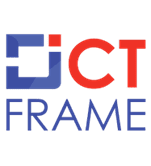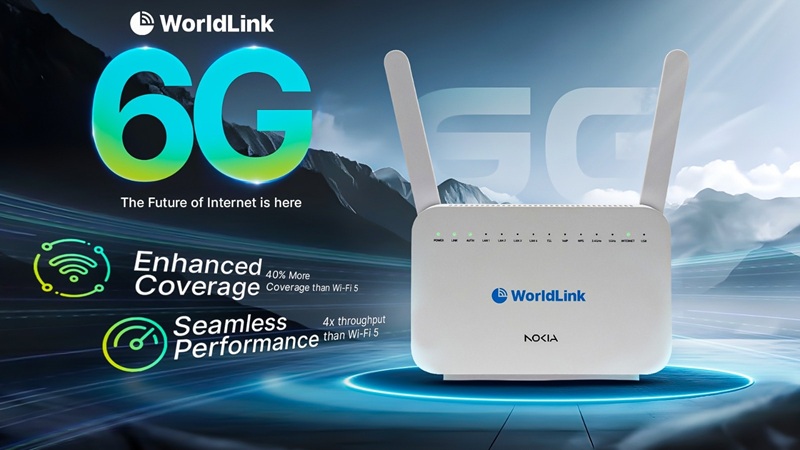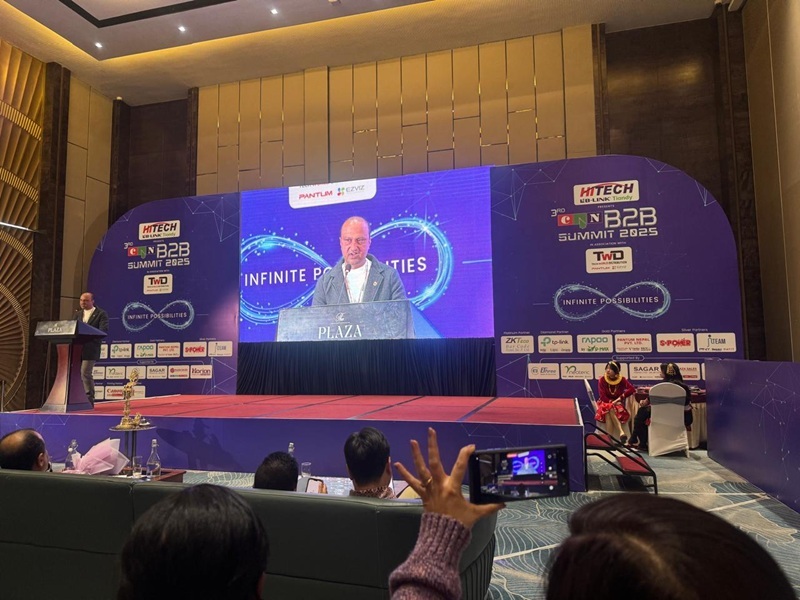WorldLink Launches ‘6G Wi-Fi’ in Nepal: A Leap Towards A Smarter Digital Future
10th November 2025, Kathmandu
WorldLink Communications Limited, Nepal’s largest Internet Service Provider (ISP), has officially introduced its next-generation Wi-Fi technology, dubbed ‘WorldLink 6G,’ in a special ceremony held at Hotel Marriott, Naxal.
WorldLink 6G Wi-Fi in Nepal
This launch, which refers to the globally recognized Wi-Fi 6 (802.11ax) standard, signifies a major technological upgrade designed to transform the internet experience across Nepali homes and offices.
Key Technology & Performance Highlights
The new WorldLink 6G technology promises to resolve common connectivity challenges faced by multi-device households and large enterprises, emphasizing stability, speed, and coverage.
Enhanced Coverage
The company claims the new technology offers 40 percent greater coverage than the existing Wi-Fi 5 standard, helping eliminate dead zones in homes and multi-story buildings.
Superior Speed and Stability
WorldLink states the technology delivers up to four times faster speeds and more reliable performance, which is crucial for modern bandwidth-intensive tasks like 4K streaming, online gaming, and video conferencing.
Global Collaboration
The launch was highlighted by the strategic collaboration between WorldLink and Nokia, with representatives emphasizing that this partnership will support the expansion of international-standard internet services across Nepal.
Corporate Milestone
WorldLink Chairman and Managing Director, Dilip Agrawal, inaugurated the technology, noting that the launch of Wi-Fi 6 is a critical step towards a smarter, faster, and more efficient digital era for the country.
Commitment to Community and Sports
Beyond its technological achievements, WorldLink demonstrated its commitment to community engagement by announcing its sponsorship of the Kathmandu Gorkha team for the upcoming Nepal Premier League (NPL) 2025.
WorldLink CEO Keshav Nepal underscored the company’s commitment to supporting both technological leadership and community initiatives, pledging to help transform Nepal into an even more “smart, fast, and connected country.”
Impact and Future Technology in Nepal’s Telco Sector
The launch of WorldLink’s Wi-Fi 6 service has immediate and long-term implications for the competitive landscape and technological future of Nepal’s telecommunications sector.
Immediate Impact on ISPs
This move by WorldLink significantly raises the bar for other Internet Service Providers (ISPs) in Nepal.
Technological Arms Race
Competitors like Subisu, Vianet, and CG Net, some of whom have already introduced or teased Wi-Fi 6, will be compelled to accelerate their own network upgrades and deployments of the new standard to remain competitive, especially in high-demand urban areas.
Quality Over Speed
The focus shifts from merely offering high bandwidth (like 1 Gbps) to providing a superior in-home quality of experience, better coverage, lower latency, and efficient handling of multiple devices (smart TVs, phones, IoT devices), which Wi-Fi 6 excels at.
Differentiation
WorldLink’s strategic use of the term ‘6G’ (a common misnomer for Wi-Fi 6) serves as a potent marketing tool, further intensifying the competition in service promotion and branding.
Future Technology and Telco Sector Dynamics
The successful deployment of high-end fixed-line technology like Wi-Fi 6 reinforces the trend of ISPs gaining dominance over traditional mobile network operators (MNOs) like Nepal Telecom and Ncell in the data consumption market.
Fixed-Line Dominance
ISPs, driven by affordable Fiber-To-The-Home (FTTH) infrastructure, are increasingly becoming the primary source of high-volume, high-speed data for Nepalese households.
This puts sustained pressure on MNOs, whose mobile data revenues have been challenged by the prevalence of ISP-provided free Wi-Fi hotspots (WorldLink’s “Wi-Fi Express”) and high fixed-broadband penetration.
Preparing for 5G
While Wi-Fi 6 is a local network standard, its wide-scale adoption creates an environment of high digital expectation. When 5G (the true 5th generation mobile technology) is finally rolled out commercially in Nepal, users will demand seamless integration and a similar level of performance stability that Wi-Fi 6 provides indoors.
The high data demand fostered by Wi-Fi 6 will make the eventual investment in 5G infrastructure by MNOs more justifiable, particularly for enterprise and industrial applications.
Digital Ecosystem Growth
This upgrade supports the government’s Digital Nepal Framework by enabling advanced technologies like smart homes, remote work, high-quality e-learning, and e-commerce across a wider user base.
The partnership with Nokia also signals the increasing importance of global technological alliances in enhancing Nepal’s digital infrastructure.
In conclusion, WorldLink’s launch of Wi-Fi 6 is not just a product announcement; it is a foundational step that sets a new standard for connectivity quality, intensifies competition among ISPs, and accelerates Nepal’s overall digital transformation by catering to the complex demands of the modern connected world.
For more: WorldLink 6G Wi-Fi in Nepal








